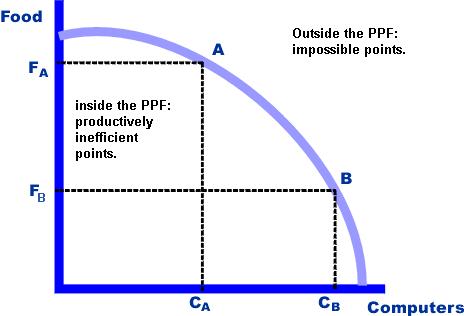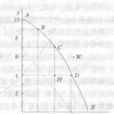基本介紹
- 中文名:生產可能性邊界
- 外文名:Production possibility frontier
簡介



Production possibility frontier編輯 鎖定 生產可能性邊界,簡稱PPF(或是production-possibility boundary)。用來表示經濟社會在既定資源和技術條件下所能生產的各種商品最...
生產可能性邊界,英文是production-possibility frontier,簡稱PPF(或是production-possibility boundary)。用來表示經濟社會在既定資源和技術條件下所能生產的各種商品最大...
圖中曲線PPFA、PPFB分別是國家A、B的生產可能性邊界(production possibility frontier),由於國家A勞動力充裕、國家B資本充裕;X商品勞動密集,Y商品資本密集,國家A生產...
生產可能性邊界(production-possibility frontier,PPF)表示在技術知識和可投入品數量既定的條件下,一個經濟體所能得到的最大產量。PPF代表可供社會利用的物品和勞務的...
圖中曲線PPFA、PPFB分別是國家A、B的生產可能性邊界(production possibility frontier),由於國家A勞動力充裕、國家B資本充裕;X商品勞動密集,Y商品資本密集,國家A生產...
Text C Economics Basics:Production Possibility Frontier (PPF)and Opportunity CostChapter Two Development Economicas 發展經濟學Text A What Is Development ...
Text C Economics Basics: Production Possibility Frontier (PPF) and Opportunity Cost(9) Chapter Two Development Economics發展經濟學(15) Text A What Is Devel...
Search Engine Application of SME Based on Precision Marketing、A Study on Production-possibility Frontier of Net Business等十篇論文獲EI(The Engineering Index...
生產可能性曲線(又稱生產可能性邊界)[Production-Possibility Frontier]——表示在資源或要素量既定前提下,社會所能生產的兩種產品的各種最大產量組合....
圖中曲線PPFA、PPFB分別是國家A、B的生產可能性邊界(production possibility frontier),由於國家A勞動力充裕、國家B資本充裕;X商品勞動密集,Y商品資本密集,國家A生產...
生產可能性邊界,英文是production-possibility frontier,簡稱PPF。用來表示經濟社會在既定資源和技術條件下所能生產的各種商品最大數量的組合,反映了資源稀缺性與選擇性...
生產可能性邊界線(Production Possibility Frontier,簡稱PPF),在給定的數量的資源下,所能夠生產的最大數量的產品,在數學上表示為一道邊界。邊界內部是能夠達到的,...
